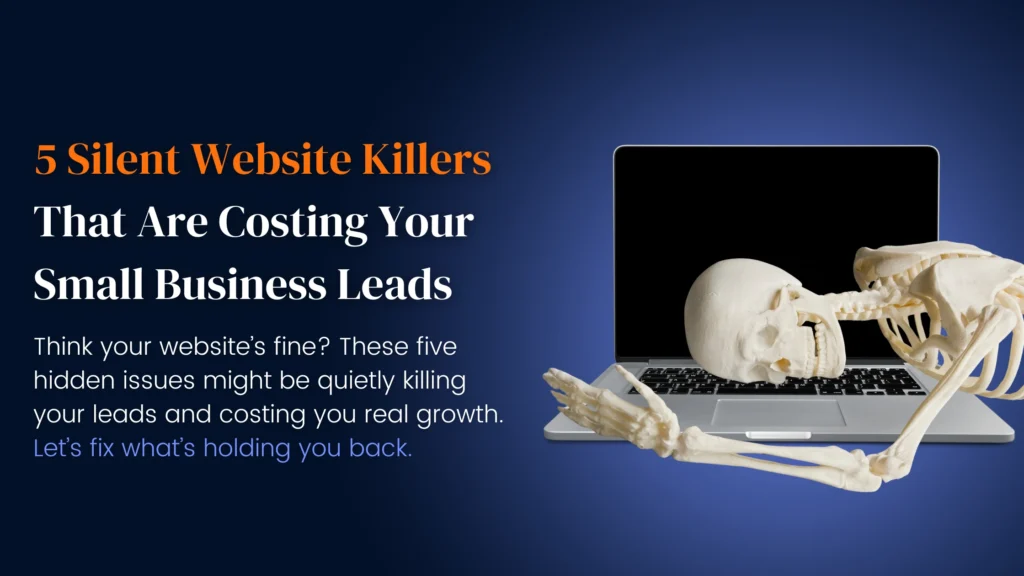Social Media is important for your business because spending 145 minutes on your personal accounts isn’t enough. 145 minutes is the average amount of time a person is on just social media every single day. This beats the amount of time people watch tv commercials at approximately 60 minutes and listening to radio ads at 30 minutes. Still, many small business owners drag their feet into the social media world and for good reason. They’re busy running a business. If your work time is precious, but still want to connect with your customers online, read on for more tips about the basics of social media marketing and how to make it an efficient use of your time.
How to create social media goals?
Let’s first define what we are trying to accomplish with your social media presence. Goals we can accomplish with social media are things like building your brand identity and awareness, connecting with your customers and being various stages of the sales cycle.
Of course, you can have multiple goals, but don’t have zero and don’t have too many at one time. Setting goals will help you track your progress and analyze what is working for your social media strategy.
Now how do you set a goal? You can use the most popular framework SMART goals. It’s a very simple way to ensure you’re considering everything you’re trying to accomplish. Here’s an example of a possible SMART goal for your reference:
Specific: Using numbers to identify a set goal is the most common strategy to make a goal specific. Good examples would be increase followers by 100 or tweet 3 times per week. Don’t use goals like increase social media following or post more often. Vagueness is the enemy.
Measurable: Tracking data is easier than ever, so keep this in mind when picking what metrics you want to measure. You might want to make sure your analytics tool reports on the metric before you set an entire campaign goal around it.
Attainable: Everyone wants to be a Tik Tok store, or is that just my cat? In any case, don’t think internet fame is going to happen for your business just because that’s your goal. Be realistic in what goals you can achieve. You’re welcome to set long term goals, but breaking it down into weekly, monthly and quarterly intervals is probably your best bet.
Relevant: Make sure your social media goal is aligned with your business goals. If your clients you’re targeting don’t use Twitter, maybe don’t spend all your energy on Twitter. Each business is different, so coordinate your social media plans to what your overall objective is for your business.
Timely: Deadlines are important. Previously mentioned, set goals in both short- and long-term intervals. The strategy you want to avoid is setting a time around a specific goal metric. Don’t simply state you want to reach 1,000 followers. Break it down by setting a goal to reach 250 followers each quarter or even something like 100 followers each month.
Example SMART Social Media Goals.
Brand awareness: Increase 100 Facebook followers by the end of July 2021.
Connecting with customers: Receive 200 likes on LinkedIn posts by the end of Q3 2021.
Learning about new product or service: Receive 20 new clicks on your posted blogs from all your social media accounts about your new service over the next two weeks.
There is an abundance of social media goals you can target for your business. Check out this Hootsuite blog for some more ideas about what you can do for your business.
Analyze your competition.
Imitation is the most sincere form of flattery. Not exactly what we’ll be going for when you research your competitor’s social media accounts, but you get the point. Select a few of your biggest competitors and analyze what they have been doing on their social media accounts. If they do nothing, great! You will have a leg up on them.
In most cases, they’ll have a social media presence of some kind and emulate their best ideas. Remember to come up with your own unique promotions, but if some advertising strategy worked for your competitor, it can work for you too.
This is also a great opportunity to do some keyword research and see where you can use some improvements. You can create an entire social media strategy around improving your keywords on your website by linking your social media posts to your website that contains said keywords.
Social Media Audit.
Before you set your sites on where you’re going, check out where you’ve been. You will need to audit your social media accounts to see how they are performing. Depending on how often you have been posting or the age of each social media account, you will need to look at a decent of amount of past data. Here are just a few things you should consider when auditing your social media accounts history.
- Look at your demographics of your followers. Is this consistent with typical target customers?
- Analyze your top performing posts. Which types of posts receive the most engagement?
- Who owns the channel, how often do you post and what content have you already posted?
- What is the purpose of your social media? Come up with a core social media message that is relevant to your overall business goals. This brings more purpose and identity to your brand identity. Your customers should know your values and what you stand for based off your social media accounts messaging.
“Remember to come up with your own unique promotions, but if some advertising strategy worked for your competitor, it can work for you too.“
What should you post?
Depending on your audience, industry, platform and capabilities will affect what you post on your social media accounts. Here is a list of ideas for you to use at your leisure.
- New services or products
- Video content
- Company news
- Promotional deals or give aways
- Memes
- Gifs
- Community events
- Holiday posts
- Company events
- Polls Questions
- Previews and teasers
- Blog posts
- Links to your website
- Tips
When should you post?
It depends! The most general rule of thumb is post between 8am and 10am earlier in the week. There’s your short answer, but it won’t hold true across every industry. It’s vital anyone who oversees their social media accounts to track their own data.
This will give you the real answer for your business and not a guesstimate. Do some A/B testing and post at different times on the same days.
Overtime, you will compile data and that is what I would go off of when deciding when to post. Consider when your target audience has free time and would likely get on social media. Adjust your times and days accordingly.
What tools to use for social media management?
Your social media management tools should align with the other platforms you use in your tool stack. Also consider what platforms and what type of social media management you will need.
It’s not recommended you only use one form of social media, but if that is the case, you might not even need anything.
General strategy for picking your tool, try 4-5 free versions out and decide what’s best for your needs. There isn’t a best social media tool out there. Do your research, read reviews, setup demos from the companies and take a holistic approach to your online tool stack.
With all that being said here are some of our suggestions and then feel free to check out this link from Influencer Marketing Hub with some other good platforms that I don’t cover.
HubSpot: This is a great tool for anyone who is taking marketing to the next level. Unfortunately, this is also going to take your cost to the next level too. HubSpot is a CRM platform that specializes in online marketing that supports social media, email marketing, marketing automation and much more. Other than the price, there isn’t much bad to say about it.
HootSuite: Here is a middle tier option that specifically focuses on social media management. It supports users on Facebook, LinkedIn, Twitter, Instagram, Pinterest and Youtube. The core benefit of HootSuite is it brings all your social media accounts together. This way you can post all from the HootSuite platform, set up scheduled posts, automated posts and then analyze your information.
Buffer: Similar to HootSuite, Buffer is a social media platform that doesn’t dabble into other CRM capabilities like HubSpot. Buffer would be one of the cheaper options out there, but does live up to its price. Buffer is right for smaller businesses that won’t have too many users on the account. It is also great to reply to customers comments.
Active Campaign: Going back to another CRM tool that also supports social media management brings us to Active Campaign. Here is a CRM tool that will be great for email marketing and marketing automation just like HubSpot.
The big difference is social media isn’t a focus of Active Campaign, but you can integrate it into the platform using Zapier’s integrations options. This isn’t a great option for actually managing social media accounts, but it is good if you want to keep your budget lower.
How to analyze social media data?
Let’s take a quick look at how we should be analyzing our social media performance once we have implemented our strategies. Your key performance indicators you outlined in your social media smart goals should be what you keep your eye on the most. However, don’t limit yourself to only tracking that data when other factors will be playing a role.
For example, you might be tracking your most popular posts, but if you are gaining followers each week, your most recent posts might be getting more engagement just due to the fact more eyeballs are seeing it.
Social Media analytics tools like HubSpot, Google Analytics, Cyfe, BuzzSumo, Sprout Social and much more will be great resources for you to compile your data. Check out this Sprout Social blog for some more suggestions.
It’s recommended you or your marketing professional analyze your social media results on a weekly, monthly, quarterly and annual basis. This should drive your social media content and calendar going forward. Don’t expect perfect results every post, but expect to refine your strategy as you get more and more data.
Here are just a few important social media metrics you would want to keep an eye on, beyond whatever key performance indicators you set in your SMART goal. Keep the metrics in mind when you’re choosing what social media management tool because they may not all report on the same metrics.
- Followers
- Engagement (Likes, retweets, favorites, comments)
- Impressions
- Conversion Rate
- Time Spent on Website
- Reach
- Brand Mentions
- Sentiment
- Total Shares
Social media is only one part of the puzzle when trying to reach your online marketing goals. Using online advertising like Google Ads to promote your social media accounts can be a great way to reach your goals. Check out this Google Ads article to learn more.
Need a hand beating out your local national competitors in the social media world? First Call Web provides SEO and helps you setup your website based off of our years of experience. We only take a certain number of businesses per industry and market, but please reach out to see if we’d be a good fit. Thanks for reading.




